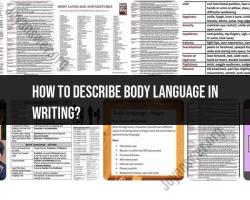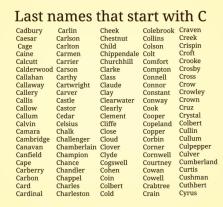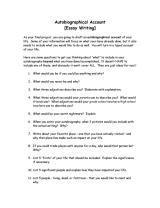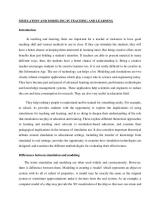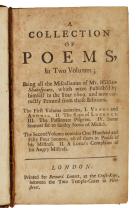What is creative writing course?
A creative writing course is an instructional program designed to teach and develop the skills necessary for creative expression through writing. These courses are offered at various educational levels, from introductory workshops to more advanced and specialized programs at the undergraduate or graduate levels. The primary goal of a creative writing course is to foster creativity, imagination, and proficiency in crafting written works across different genres, including fiction, poetry, creative nonfiction, and drama.
Here is an overview of the typical components you might find in a creative writing course:
Introduction to Creative Writing:
- Many courses begin with an introduction to the fundamental principles of creative writing. This section may cover basic concepts such as plot, character development, setting, point of view, and theme.
Genres of Creative Writing:
- Courses often explore various genres of creative writing, allowing students to experiment with different forms and styles. This may include studying and practicing fiction, poetry, creative nonfiction, screenwriting, and drama.
Writing Workshops:
- Workshops are a core element of creative writing courses. In a workshop setting, students share their work with peers, and constructive feedback is provided. This collaborative process allows writers to refine their skills through critique and discussion.
Craft Elements:
- Courses delve into the craft elements of writing, focusing on techniques that contribute to effective storytelling. This may include discussions on characterization, dialogue, plot structure, narrative voice, and literary devices.
Writing Exercises and Prompts:
- Creative writing courses often incorporate writing exercises and prompts to stimulate creativity and provide opportunities for experimentation. These exercises encourage students to explore different styles and themes.
Reading Assignments:
- Reading assignments are an integral part of creative writing courses. Students are exposed to works by established authors within various genres to gain insights into different writing styles and literary traditions.
Revision and Editing:
- Understanding the revision and editing process is emphasized in creative writing courses. Students learn to critically evaluate and revise their work, honing their ability to refine and improve their writing over multiple drafts.
Literary Analysis:
- Some courses include components of literary analysis, encouraging students to critically analyze published works. Analyzing the techniques employed by accomplished authors provides a deeper understanding of the craft of writing.
Creative Critique:
- Learning to give and receive constructive feedback is a crucial aspect of creative writing courses. Students practice providing thoughtful critiques and learn to use feedback to enhance their writing.
Portfolio Development:
- In longer-term courses or advanced programs, students may work on developing a portfolio of their best writing pieces. This portfolio serves as a showcase of their skills and creative accomplishments.
Author Visits and Guest Speakers:
- Some courses may feature guest authors or industry professionals who share insights into the writing and publishing process. This exposure provides students with a broader understanding of the writing world.
Publication Opportunities:
- In some cases, creative writing courses explore opportunities for publishing students' work, whether through literary magazines, online platforms, or other avenues.
Creative writing courses can be found at various educational institutions, including universities, community colleges, writing centers, and through online platforms. They cater to individuals with different levels of writing experience and interests, providing a supportive environment for developing creative writing skills.
What does a typical creative writing course curriculum cover?
A typical creative writing course curriculum typically covers a range of topics and activities designed to guide students in honing their writing skills and developing their creative abilities. While the specific content may vary depending on the level of the course, genre focus, and instructor, here's a general overview of what you can expect:
Fundamentals of Writing:
- Grammar and Mechanics: This section refreshes or reinforces basic grammar rules, punctuation, and sentence structure for clear and effective writing.
- Vocabulary Building: Activities and exercises focus on expanding vocabulary and understanding the nuances of word choice to enhance writing impact.
- Rhetorical Skills: Students learn about different writing styles and their appropriate uses, including narrative, descriptive, persuasive, and expository writing.
- Creative Thinking: Exercises and prompts encourage students to think outside the box, develop unique ideas, and explore different creative approaches to writing.
Genre-Specific Techniques:
- Fiction: Students delve into the elements of storytelling, character development, plot structure, dialogue, and building suspense.
- Poetry: Exploring various poetic forms, meter, rhyme scheme, imagery, and figurative language to create impactful and evocative poetry.
- Scriptwriting: Understanding the fundamentals of screenplay format, character development, scene construction, and dialogue writing for dramatic storytelling.
Reading and Analysis:
- Literary Analysis: Students study classic and contemporary literary works to understand effective writing techniques, analyze different styles, and evaluate narrative structures.
- Critical Thinking: Through discussions and analyses, students learn to identify and understand the underlying themes, messages, and symbolism within literature.
- Peer Review and Feedback: Sharing their work with classmates and receiving constructive feedback helps students identify areas for improvement and refine their writing.
Creative Practice and Development:
- Writing Exercises and Prompts: Engaging in regular writing exercises and exploring various prompts helps students hone their skills, experiment with different styles, and discover their unique voice.
- Genre-Specific Workshops: Workshops provide opportunities to focus on specific writing skills and techniques within a chosen genre, receiving tailored feedback and guidance.
- Revision and Editing: Students learn the importance of revision and editing to refine their work, improve clarity, and polish their writing for publication.
Independent Writing Projects:
- Short Stories: Students complete short story projects, allowing them to apply their acquired skills in crafting a complete narrative work.
- Poetry Collections: Compiling a collection of poems showcases their understanding of various poetic forms and their ability to express themselves creatively through verse.
- Scripts and Screenplays: Developing a script or screenplay allows students to translate their ideas into a dramatic format, applying storytelling and dialogue techniques.
Additional Components:
- Guest Speakers and Lectures: Renowned authors, editors, and industry professionals can offer valuable insights and inspiration to students.
- Literary Magazine and Readings: Participating in a student-run literary magazine or attending readings provides opportunities to showcase their work and gain recognition.
- Community Building and Networking: Creative writing courses foster a supportive community where students can connect with peers, share their work, and learn from each other.
It's important to remember that this is just a general overview, and the specific content of your creative writing course may vary depending on various factors. It's recommended to research the curriculum of individual courses and programs to find one that best suits your interests and writing goals.



